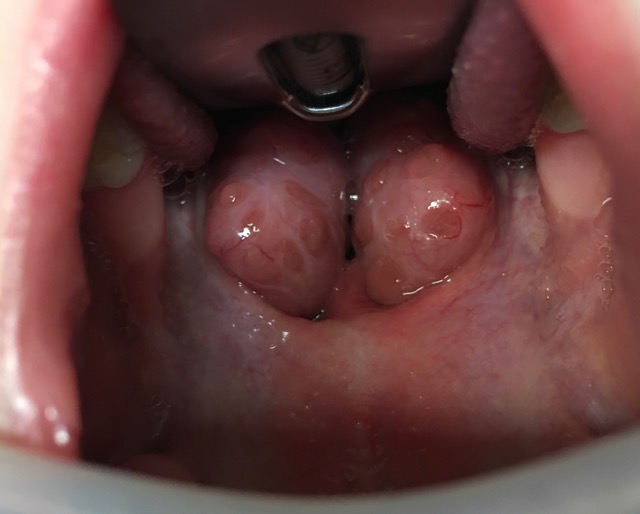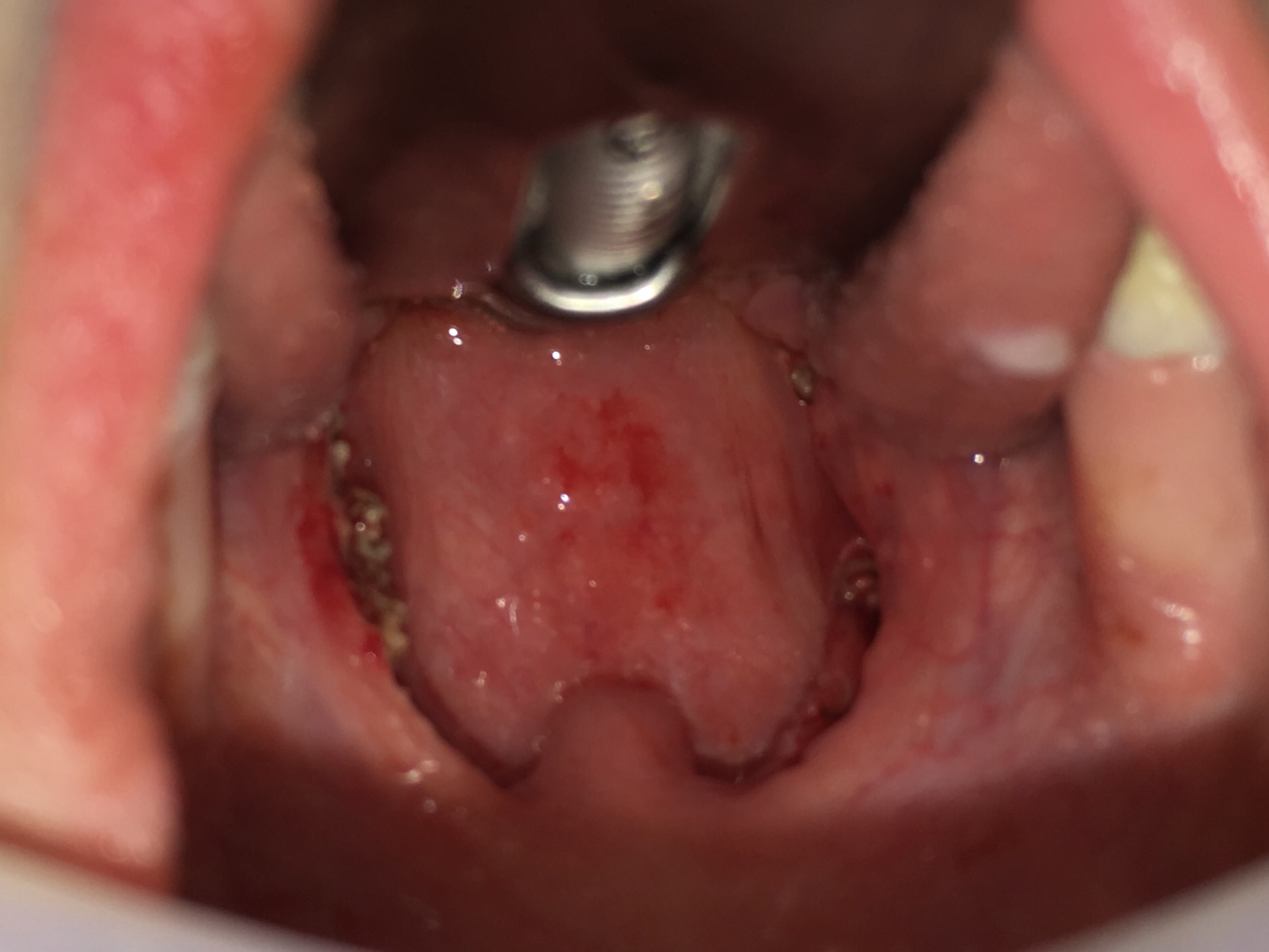Obstructive tonsils in a child affected by obstructive sleep apnea syndrome before tonsillotomy with coblator
TONSILLOTOMY AND TONSILLAR CRIPTOLISIS BY COBLATOR SURGERY
The coblator is an innovative device that allows to cut or vaporize the tissue by bipolar radiofrequency at very low temperatures (50-70°C), while other bipolar or monopolar instruments can reach a 400 °C temperature. It is easy to understand that the low temperature allows to preserve from thermal injury the healthy issues surrounding the site of surgery.
Coblation technique has two main indications for tonsil surgery:
- A volume reduction of the tonsils when they are so big to cause respiratory obstruction (sleep disordered breathing). This condition is more frequent in children and is currently the main indication for tonsils removal in most countries. Tonsillectomy (= total removal of the tonsils) performed in the traditional way is the cause of post-operative pain and of a risk of bleeding for about 3 weeks after surgery. The tonsillotomy procedure allows to remove most of the tonsillar tissue leaving just a thin layer that acts as a protection for the sensitive nerves and for the vessels that go through the tonsillar capsule that is not removed in the procedure. Post-operative pain and bleeding risk are minimized.
It is actually under study in the UK the possibility to validate the technique of intra capsular tonsillectomy (=removal of the tonsil sparing the capsule) to be applied also for children undergoing the operation for recurrent tonsillitis, in order to minimize the post-operative risks and discomfort.
- The so called “cryptolysis” is a conservative procedure performed in patients affected by debris and tonsilloliths (stones) deposited in the depth of the tonsillar crypts. This condition can cause discomfort, pharyngeal pain, inflammation and halitosis. The opening of the crypts can be performed by several techniques; coblation allows a mini-invasive removal of the superficial layers of the tonsil opening up the crypts and avoiding the accumulation of bacteria and debris.



